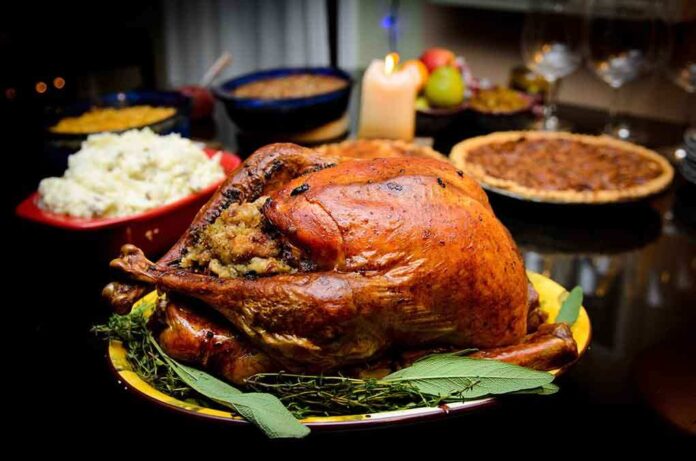
Thanksgiving foods long considered “bad” for blood sugar may actually hold surprising benefits for diabetics, raising questions about long-held dietary beliefs.
Story Highlights
- Traditional Thanksgiving dishes like stuffing and mashed potatoes might be healthier than thought.
- Experts suggest that portion control and preparation methods are key to healthier holiday meals.
- Recent studies encourage a balanced approach to holiday eating for those with diabetes.
- Empowering individuals with diabetes to enjoy traditional meals without the guilt.
Traditional Foods Under New Light
Thanksgiving meals, often laden with carbohydrates, have historically been deemed risky for those managing diabetes. However, evolving research challenges this narrative. Experts suggest that when traditional foods like stuffing and mashed potatoes are consumed in moderation and prepared thoughtfully, they can fit into a healthy diet. By focusing on portion control and incorporating whole grains and vegetables, these dishes can provide essential nutrients without causing significant blood sugar spikes.
This shift in perspective is particularly significant for the nearly 40 million Americans dealing with diabetes. The emphasis is now on integrating fiber, protein, and healthy fats into meals, allowing individuals to partake in holiday traditions while maintaining blood sugar stability. This approach marks a departure from past dietary advice that advocated for strict avoidance of carbohydrate-rich foods.
Expert Recommendations
Recent guidance from health organizations emphasizes a balanced plate strategy. Experts recommend filling half the plate with non-starchy vegetables, one-quarter with lean protein like turkey, and the remaining quarter with starches. This portioning helps manage glycemic response while allowing indulgence in favorite holiday dishes. Additionally, swapping traditional recipes for those with whole grains and reduced sugars can further aid in stabilizing blood sugar levels.
For example, incorporating whole grains into stuffing or leaving potato skins on in mashed potatoes can introduce beneficial fiber, slowing glucose absorption. Homemade cranberry sauce with less sugar and whole cranberries offers antioxidants and fiber, making it a smarter choice for health-conscious diners.
Empowerment Through Education
The focus on empowerment and flexibility in dietary management is a positive development for those with diabetes. By debunking myths and providing evidence-based guidance, healthcare providers enable individuals to make informed decisions about their holiday meals. This approach not only reduces anxiety around food choices but also promotes a sense of inclusion during traditional celebrations.
Incorporating these insights into meal planning can lead to improved glycemic control and overall quality of life. The evolving narrative around Thanksgiving foods highlights the importance of individualized dietary approaches, fostering a supportive environment for those managing diabetes.












